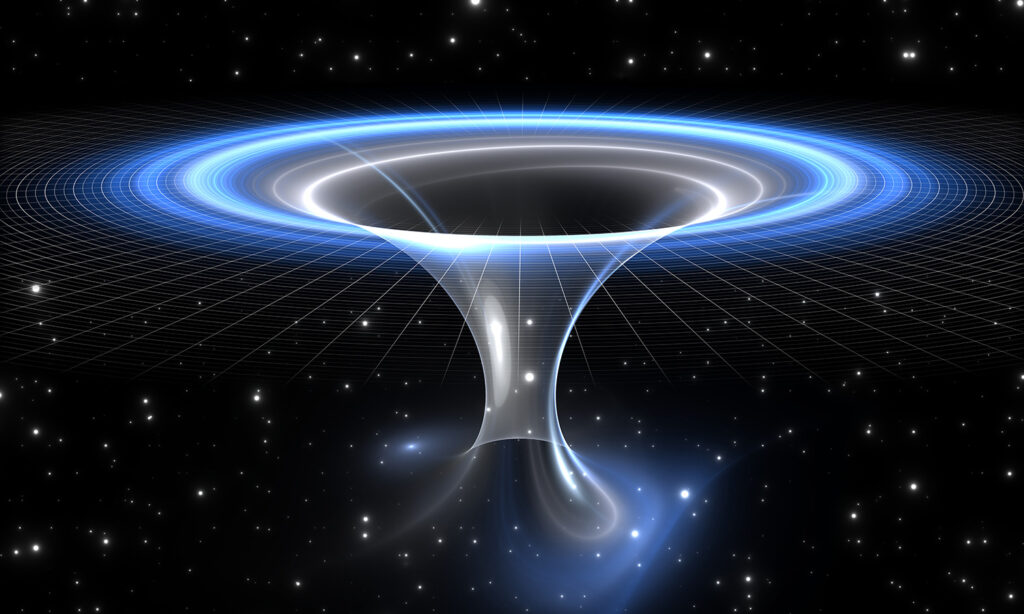There are methods to reveal if time travel is possible. In 2009, physicist Stephen Hawking organized a party for time travelers; however, there was a twist. He sent out the invitations a year later, resulting in no guests showing up. This incident, along with other arguments made by Hawking and others, suggests that time travel is likely impossible. Furthermore, even if time travel were achievable, it is theorized that one could only travel to the future and not to a point prior to the creation of the time machine.
Nevertheless, when we consider the concept of time, we are all, in a sense, time travelers as we move forward through time at a constant rate of one hour per hour.
However, akin to the varying speeds of a river’s current, the flow of time can differ in different circumstances. Within the realm of scientific understanding, there are several methods proposed that could potentially expedite the journey into the future. Here, we will explore these methods in more detail.

1. Utilizing speed; time travel.
One method proposed for time travel is by utilizing speed. According to Einstein’s theory of special relativity, as an object approaches the speed of light, time dilation occurs. This means that time slows down for the object relative to the outside world.
This phenomenon has been experimentally confirmed, not just a mere conjecture. Scientists have conducted experiments with twin atomic clocks, where one was flown in a jet aircraft while the other remained stationary on Earth. The results showed that the flying clock ticked slower due to its speed.
Although the time dilation effect experienced in everyday scenarios, such as in an aircraft, is extremely small, it becomes more significant as the speed approaches the speed of light. For instance, if you were traveling in a spaceship at 90% of the speed of light, time would pass roughly 2.6 times slower for you compared to an observer back on Earth. The closer one gets to the speed of light, the more pronounced the time dilation effect becomes.
The highest speeds achieved through human technology can be observed in the protons circulating within the Large Hadron Collider, reaching approximately 99.9999991% of the speed of light. By applying the principles of special relativity, we can calculate that one second of time experienced by these fast-moving protons is equivalent to 27,777,778 seconds, or approximately 11 months, from our perspective.
It is intriguing to note that particle physicists must account for this time dilation effect when working with particles that undergo decay. For instance, in a laboratory setting, muon particles typically decay in 2.2 microseconds. However, when fast-moving muons, generated through cosmic rays colliding with the upper atmosphere, are considered, their disintegration takes approximately 10 times longer to occur. This discrepancy is a direct consequence of the time dilation effect caused by their high speeds.
2. Concept of gravity in time travel.
Another method of time travel is based on the concept of gravity, as described by Einstein’s theory of general relativity. According to this theory, the strength of gravity experienced affects the passage of time.
As you approach the center of a massive object like the Earth, the gravitational force becomes stronger. Consequently, time runs slower for objects closer to the center compared to those farther away.
This gravitational time dilation effect has also been experimentally verified. In 2010, physicists at the US National Institute of Standards and Technology (NIST) conducted an experiment involving two atomic clocks placed on different shelves, with one positioned 33 centimeters above the other. The lower clock ticked slower due to experiencing a slightly stronger gravitational field.
To travel into the far future using this method, one would need to be exposed to an area with an extremely intense gravitational field, such as near a black hole. As you approach the event horizon of a black hole, time dilation becomes more significant, causing time to slow down. However, it is important to note that crossing the event horizon of a black hole is an extremely risky endeavor, as escape becomes impossible once crossed.
The time dilation effect through gravity is not exceptionally significant, making it unlikely to be worthwhile for practical time travel purposes.
Even if we assume that one possesses the technological means to travel vast distances to reach a black hole (with the closest one being approximately 3,000 light years away), the time dilation experienced during the journey itself would be far greater than the time dilation caused by orbiting the black hole.
It is worth mentioning that the extreme time dilation depicted in the movie “Interstellar,” where one hour on a planet near a black hole is equivalent to seven years on Earth, is deemed impossible in our universe, as stated by Kip Thorne, the scientific advisor for the movie.
A fascinating aspect to consider is that GPS systems must account for the effects of both satellite speed and gravity-induced time dilation in order to function accurately. Without these necessary corrections, GPS capabilities on our phones would not be able to pinpoint our location on Earth with the precision they currently achieve, potentially leading to inaccuracies of several kilometers.
3. The concept of suspended animation in time travel.
An alternative method for potential time travel to the future involves the concept of suspended animation. By slowing down or halting bodily processes and then resuming them at a later point, one could potentially alter their perception of time.
In nature, certain organisms like bacterial spores are capable of existing in a state of suspended animation for extended periods, remaining dormant until specific conditions trigger the resumption of their metabolic activities. Similarly, certain mammals such as bears and squirrels can enter a state of hibernation, slowing down their metabolism significantly and reducing their cells’ demand for resources like food and oxygen.
The question arises: Could humans achieve a similar feat?
Although completely halting human metabolism currently surpasses our technological capabilities, some scientists are actively researching methods to induce short-term hibernation-like states lasting several hours. Such a technique could have potential applications in medical emergencies, allowing individuals to endure critical situations like cardiac arrest until they can reach a hospital for treatment.
In 2005, a group of American scientists successfully demonstrated a method to slow down the metabolism of mice, despite them not naturally hibernating. They achieved this by exposing the mice to minute doses of hydrogen sulphide, a compound that binds to the same cell receptors as oxygen. As a result, the core body temperature of the mice dropped to 13 °C, and their metabolism decreased by a factor of 10. Remarkably, after six hours, the mice could be reanimated without any adverse effects.
However, attempts to replicate similar experiments on larger animals such as sheep and pigs did not yield successful results. This suggests that the method employed may not be effective for larger animals.
Another approach involves inducing a hypothermic hibernation state by replacing the blood with a cold saline solution. This method has shown promise in experiments conducted on pigs and is currently undergoing human clinical trials in Pittsburgh, aiming to assess its viability for human applications.

4. The use of wormholes; time travel
Another intriguing concept for potential time travel is the use of wormholes, which are theoretical shortcuts through spacetime that could potentially connect distant points or even different moments in time.
According to the principles of general relativity, wormholes could exist, allowing for the possibility of traversing vast distances, including billions of light years. Some physicists, including the renowned Stephen Hawking, suggest that wormholes might be continuously appearing and disappearing at the quantum level, far smaller than atoms. The challenge lies in capturing and enlarging a wormhole to human scales, a task that would require an immense amount of energy but could potentially be theoretically possible.
However, attempts to provide conclusive evidence either supporting or disproving the existence and practicality of wormholes have so far been unsuccessful. The main obstacle stems from the unresolved incompatibility between general relativity and quantum mechanics, two fundamental theories in physics.
5. Utilization of a rotating cylinder of light to create a twisting effect on spacetime

Another intriguing concept for time travel, proposed by American physicist Ron Mallet, involves the utilization of a rotating cylinder of light to create a twisting effect on spacetime. This idea suggests that anything placed inside the swirling cylinder could potentially be transported through both space and time, akin to the way a bubble moves on the surface of a swirling coffee when stirred with a spoon.
According to Mallet, by achieving the right geometric configuration, it could be feasible to travel into both the past and the future using this method.
Since presenting his theory in 2000, Mallet has been endeavoring to secure funding for a proof-of-concept experiment, which entails passing neutrons through a circular arrangement of spinning lasers.
However, Mallet’s ideas have not garnered widespread support from the physics community. Some critics argue that one of the fundamental assumptions in his model involves a singularity, which is a term in physics indicating an impossibility.
It is important to note that the feasibility and practicality of this approach to time travel remain subjects of scientific debate and further exploration.






